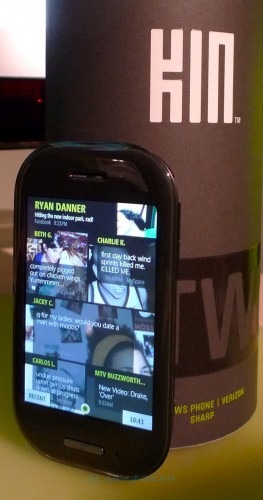Microsoft's Kin And The Emergence Of Featurephone Data Tiers
As I was in the middle of writing this month's column on Microsoft's Kin, SlashGear editor Chris Davies sent me a draft of Michael Gartenberg's column on... Microsoft's Kin. I was relieved to see that there wasn't too much overlap; Michael's column is on the Kin's target market, and I'm focusing on changing carrier pricing structures. I agree with Michael's premise: there is pent up demand for a social network appliance, and the TwitterPeek ain't it. My problem with the Kin is that we haven't been given the critical piece of information that will determine whether it will be a success: data pricing.
The U.S. cellular market is constantly evolving, but the majority of phones sold in this country today are still featurephones bought subsidized for $0 – $50 after rebate with a two year contract from a carrier store. In the past, phones like these were sold with voice plans. Carriers introduced in-network calling circles and family plans to reduce churn (i.e., make it less likely for customers to switch to another carrier) and when text messaging proved to be extremely popular, they jacked up rates on individual messages while introducing unlimited text plans, a combination that encouraged heavier messaging use and guaranteed a consistent monthly data component (text messaging counts as "data" as far as Wall Street is concerned, and investors love consistency). However, most consumers found little reason to buy a separate data plan; carriers offered a limited subset of the Internet ("walled gardens") that provided a pretty lousy user experience, and the consumers who really valued email, web surfing, and apps gravitated to smartphones.

Today, according to the CTIA, U.S. cellphone penetration is above 90%, which indicates that pretty much everyone who wants a phone has one. Some have two (otherwise, you can't approach 100% as most children still don't have their own phones. Yet). This also means that carriers are now in a zero sum game – to grow, they can't just find new customers, they have to steal market share from each other. In a free market, this often leads to price competition, and we started seeing that a few years ago with declining voice rates. Carriers kept their monthly price tiers the same but added more minutes into each plan tier. That worked for a while, but recently the national carriers have had to respond to budget regional carriers such as MetroPCS and Cricket who introduced budget unlimited plans. That forced the nationals to do likewise and offer their own unlimited voice plans, and then – gasp – actually cut the prices on those plans.
Charging less money for more minutes is not a recipe for good earnings reports, so carriers are trying to make up for the loss of voice revenue by increasing data income. One way to do that is to flood the market with QWERTY messaging phones because carriers found that if it is easier for people to text, they do it more. Another method is to super-subsidize smartphones with rich email and web capabilities; even after the subsidies, a $30 per month data plan makes a smartphone customer a profitable customer. But the boldest move is to simply make data a mandatory component of featurephone plans in addition to optional text messaging plans.
That has meant that some national carriers now offer three tiers of phones, each with a different amount of mandatory data. At the bottom level, there are still phones with no specific data plan requirements (and when those devices include a QWERTY keyboard, they are often the best selling devices in the store). In the middle are devices with $10 – 20 data plans, and at the top of the food chain, there are smartphones with $30 data plans. The problem is convincing consumers that there is a reason to step up to the middle tier of devices with a required data plan. One approach is to move all the QWERTY and touchscreen featurephones to that tier; consumers who cannot afford a full smartphone data plan can get something that looks like a smartphone with lower monthly payments than a smartphone requires. Another approach would be to provide a genuine need for a data plan, and this is where Microsoft's Kin comes in: the social connectivity and continuous cloud backup it features obviously require some sort of data plan.
Microsoft Kin One and Kin Two hands-on:
[vms de9d18c350cdf64c5aa3]
But how much will the Kin cost? Hardware pricing is not the issue. The Kin One and Kin Two are essentially Zune HD units with a cellular radio, high resolution camera, slider mechanism, extra buttons, and less flash memory. After subsidies, the Kin One should be in the same pricing neighborhood as Samsung and LG's featurephone line at Verizon Wireless (currently $79 – $99), and the Kin Two might be a bit more.
The data plan will be key. If Verizon Wireless uses the Kin's unique capabilities as a justification for stepping up to a $10/month data plan plus a mandatory $20/month text messaging plan, it will be a smash hit. The Kin's target market already considers unlimited text messaging mandatory, and the Kin is far more capable than other mid-data-tier devices like Samsung's Reality or LG's enV touch. If the carrier requires a $20/month plan plus $20 for text messaging, the Kin will still have appeal, but only as a niche device, similar to T-Mobile's Sidekick (which was often a more visible brand than sales champ). However, if Verizon Wireless requires a full $30/month data plan for the Kin, it will be a disaster. The Kin is a limited-function device in an era of smartphones, and for those willing to pay full smartphone data rates, there are already some Incredible choices available.
